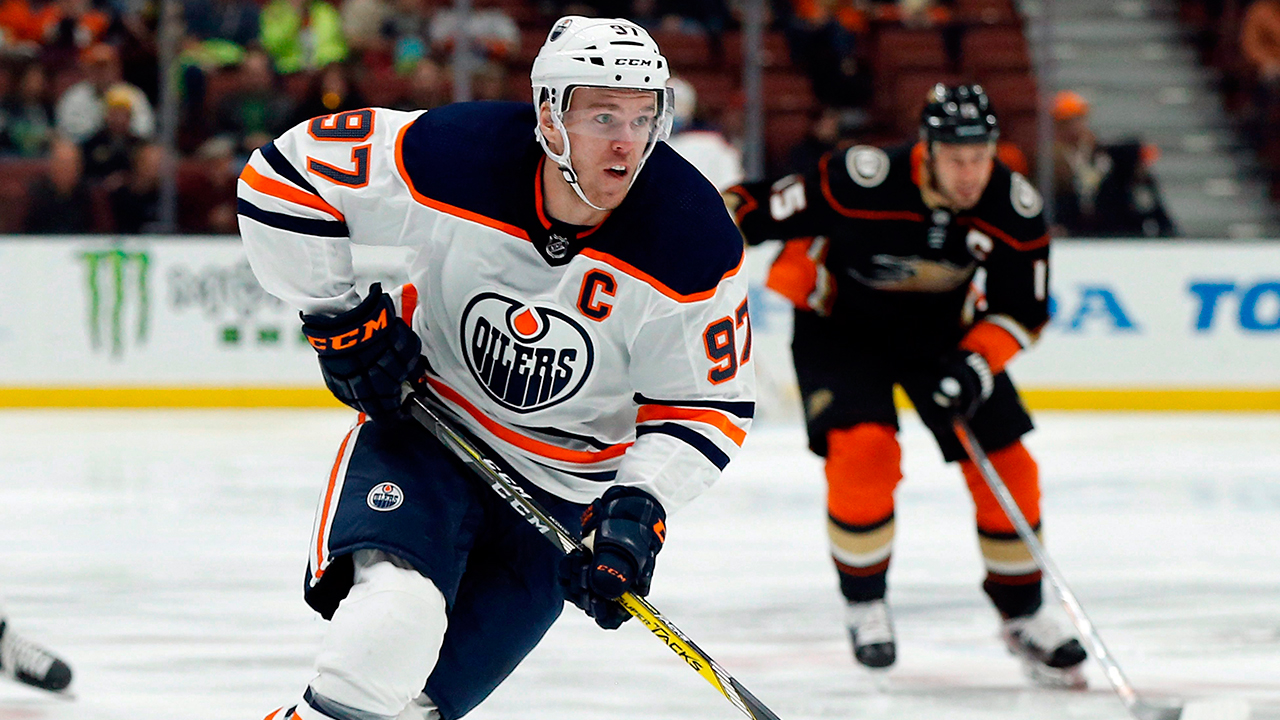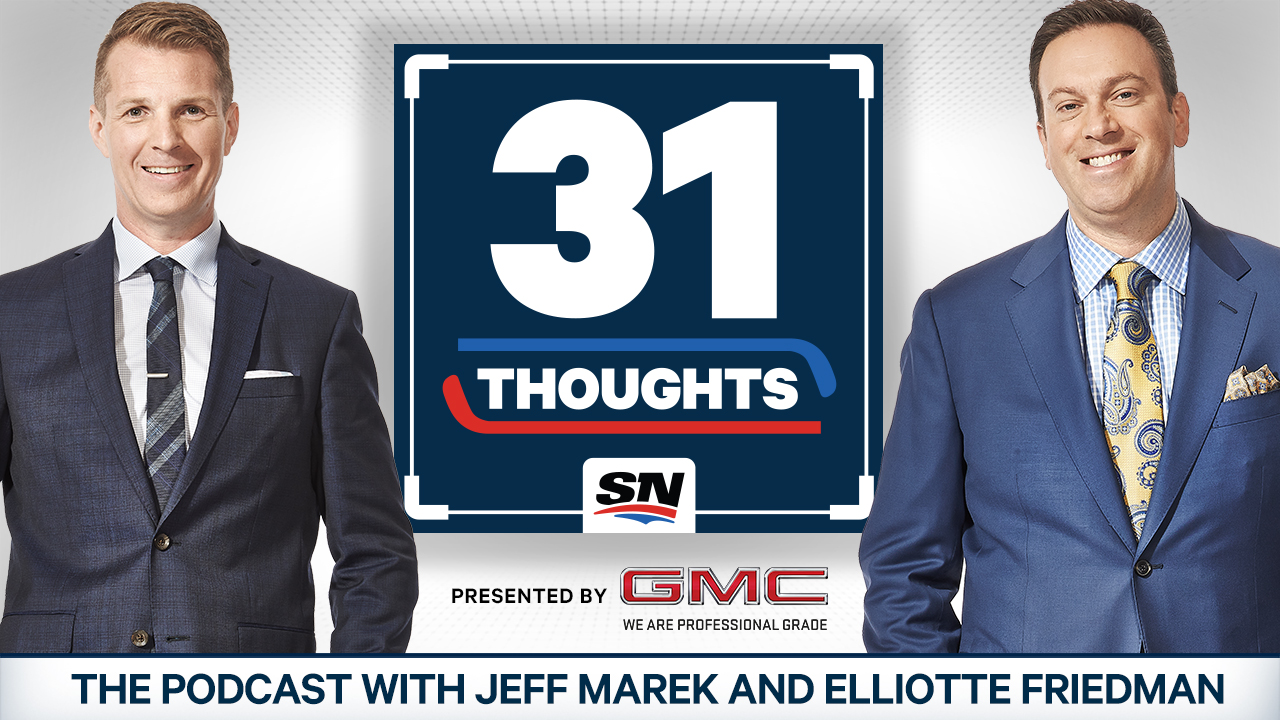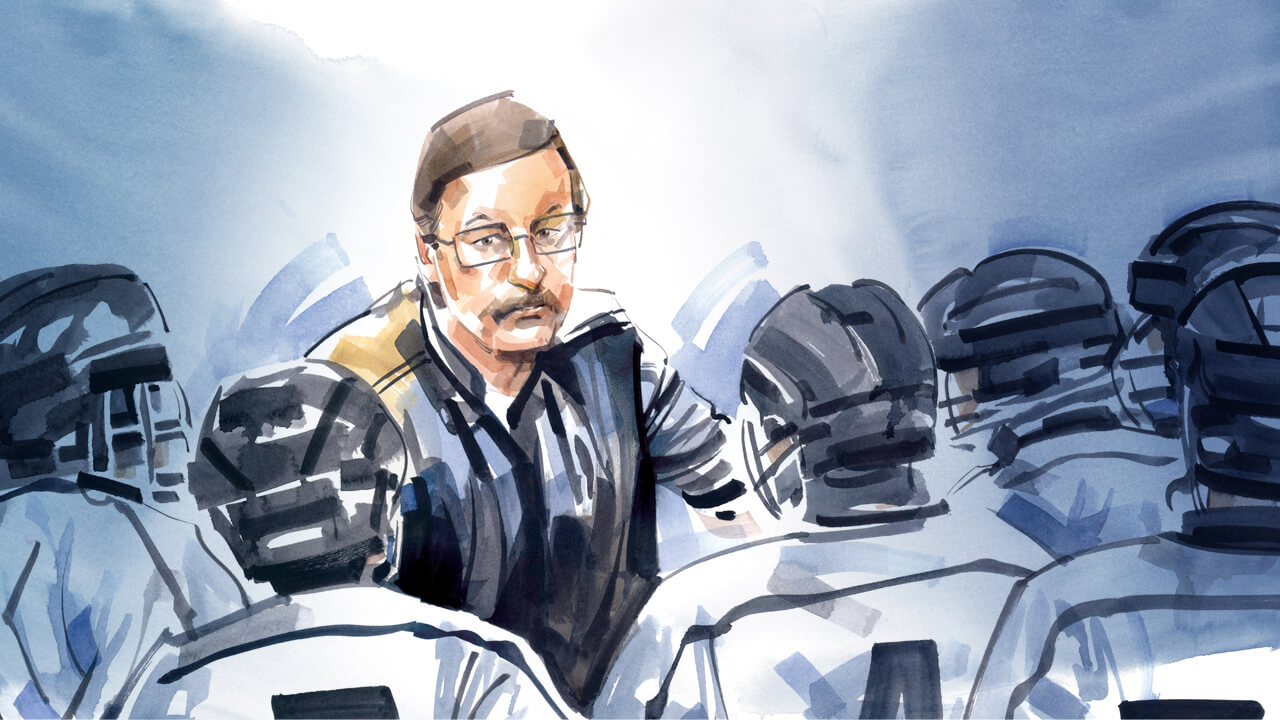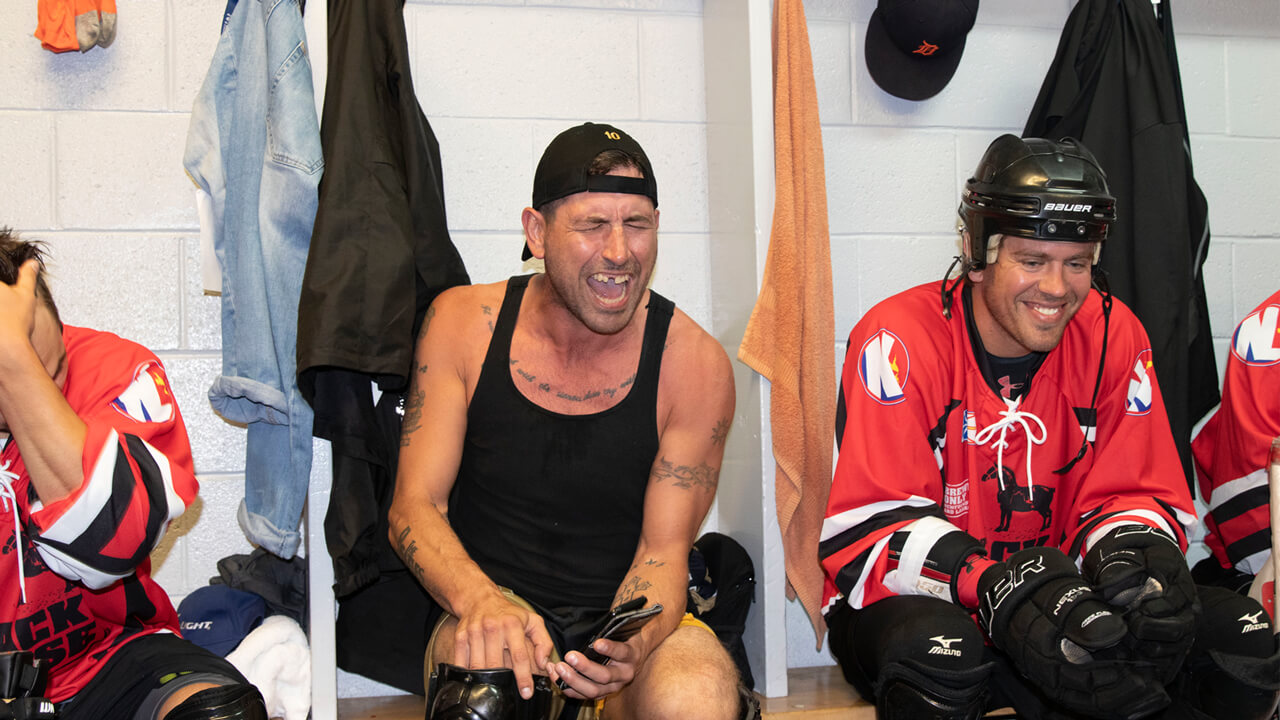It has been 26 seasons since a Canadian franchise won the Stanley Cup — cue the video of Patrick Roy’s heroics with the Habitants en route to a ring to plug his other ear. That’s long enough to qualify as a drought. And yet, with the opening of the season there’s reason for high expectations, optimism or, at worst, hope.
It goes beyond the fact the Calgary Flames had the best record in the Western Conference last season. Their captain, Mark Giordano, won the Norris Trophy and led the way for a blue line that ranked, during the regular season at least, the league’s best. The Flames’ corps of young forwards are still trending upwards, the product of some astute drafting. At this time last year, many thought Calgary could contend for a playoff spot but no one was predicting a 23-point improvement coming off a 10th-place finish in the conference.
It goes beyond the fact the Toronto Maple Leafs had their laced-up skates on the throats of the Boston Bruins. The Leafs led Boston 3–2 coming back to Toronto for Game 6 in the opening round. Two losses followed and then, for players, management and fans, a long spring of watching the Bruins ride all the way to Game 7 of the Stanley Cup Final. It wasn’t even remotely delusional for them to think: “That could have been us.” The signing of John Tavares, an unmitigated success during the season, gave them all cause to believe: “That should have been us.” With Auston Matthews and Mitch Marner around, both all of 22, it’s a very short step to: “That will be us.”
It goes beyond the fact the Winnipeg Jets are coming off seasons of 114 and 99 points and have, in Patrick Laine, not just a franchise talent but a franchise personality. As Laine goes so go the Jets, and he’d tell you as much. Laine backed up his swagger with 44 goals in his second season. He was barely chastened when his production fell off to 30 goals last season. To project him as a 50-goal scorer down the line is no reach at all. Last spring Laine’s and the Jets’ misfortune was to run into a hot team on an impossible roll in the first round, eventual Stanley Cup champion St Louis. Having already lost a couple of key pieces in Tyler Myers and Jacob Trouba due to a cap squeeze, management’s concern about the future of Dustin Byfuglien is impossible to overstate. Citing “personal reasons,” Byfuglien missed training camp and is currently suspended; still, with $14 million over two years remaining on his contract, you’d bet on Big Buff’s return sooner rather than never.
The other Canadian teams’ prospects for glory in the spring have their foundations in emerging stars, young players whose games are trending upwards. This includes but is hardly limited to: In Edmonton, the electric Connor McDavid, centre of the First All-Star team for the second season in a row and by consensus the single most talented player in the league; in Vancouver, Elias Pettersson won the Calder Trophy as the best rookie and now looks like a steal as the No. 5 pick in the 2017 draft, possessing almost magical puck skills and intuition; in Montreal, Max Domi came over in a trade from Arizona and took only a season to erase any questions about his position (yes, he’s a centre) to take a place on the first line; and in Ottawa, Thomas Chabot is the heir to Erik Karlsson’s status as a franchise defenceman and, locked up for the foreseeable future, not a wild bet to pass the departed captain in performance as soon as this season. Some of the aforementioned are more established than others but none have yet played their best games. What is true of Pettersson, a callow 20-year-old, is equally true of McDavid, a past Hart Trophy winner: You can only project growth in their games, more limited by your imagination than their talent.
You can go through the Canadian teams’ lineups and find stories of an entirely opposite sort: stars who could push themselves harder than ever, driven by the knowledge their windows are closing. This starts with the 35-year-old Giordano, undrafted coming out of major junior, the ultimate late-bloomer who’s yet to have a great spring moment though he seems so suited for the playoff grind. This also includes Montreal’s Carey Price, who, at 32, has a Vezina and a Hart Trophy and an Olympic gold but has never raised the Cup, a requisite to join the franchise’s legends such as Plante, Dryden, Roy and, yes, Vezina. In Toronto, Jason Spezza came back to his hometown for pennies on the dollars he used to make and with a willingness to take on a fourth-line role so that he might leave the game with a championship season and a short drive home.
In these micro terms and others, there’s plenty of reason for hope as we head into Game 1 for every Canadian team, hope that goes beyond the fact that until the puck is dropped, everyone is tied for first. The real source, though, the reason even the biggest underdog can believe in their shot at the Cup, is found in the macro: the NHL itself.
The Chinese curse goes: “May you live in interesting times.” That’s where NHL teams and their fans find themselves these days, in the most interesting times in sports. The only thing that you can reliably count on is surprise. No matter where your team left off last spring, you can safely ask without fear of derision: “Why not us?”
The NHL is the unruliest of professional sports leagues and, as such, a fountain of hope. You can say it has ever been so: Darkhorse teams have won the Cup — my personal favourite, the lightly considered Canadiens run back in 1971, knocking off a powerhouse Bruins team with Bobby Orr, Phil Esposito and two more voted to the First All-Star team in the opening round and winning Game 7 in Chicago in part due to a 100-foot slapshot that Tony Esposito lost in the fog.
But this hope is about current realities, not lore. In 2012, the eighth-seeded Los Angeles Kings only made the playoffs in Game 81 and, though shut out a league-high 10 times that season, then knocked off a Presidents’ Trophy winner Vancouver in the first round and lost only four playoff games total before lifting the Cup. Two seasons ago, the Vegas Golden Knights, an expansion team, was carried to the Final by goaltender Marc-André Fleury, who had been a backup on a pair of championship teams the two previous years and was presumed to be on the back nine of his career. The Golden Knights ultimately lost the last four games of their first season and had to watch Alexander Ovechkin, the superstar who for 13 years stood accused of not being able to win it, hoist the Cup after his Washington Capitals won it all. Can you imagine an expansion team making it to the Super Bowl or the World Series? Taking on the Golden State Warriors in the NBA Finals? It’s stuff that would be laughed off if scripted in the movies. Just another spring in the NHL.

And yet last season might have been the least ruly of all. The team with the league’s worst record at the midway mark raised the Cup, led by a Conn Smythe Trophy winner, Ryan O’Reilly, who had felt so defeated in Buffalo a year before that he admitted having lost his passion for the game. And we’ve all seen the goaltender who comes in off-the-radar to backstop a team in the spring — the Ken Dryden template. Still, no one ever had come from further off the radar than the Blues’ Jordan Binnington, who had stared down a possible backup role in the AHL before winning his first NHL game in January and then, five months later, Game 7 of the Stanley Cup Final.
Who won was remarkable but maybe only as much as who didn’t, namely the Tampa Bay Lightning, runaway winners of the Presidents Trophy. The Lightning are far from the first top seed to fall in the first round — in fact, all four wild-card teams advanced last spring. Rather, it was the way Tampa Bay crashed and burned: swept by the Columbus Blue Jackets, who only edged out Montreal for eighth place in Game 81.
Thirty years ago, fans talked about dynasties. When the Canadiens steamrolled opponents in the ’50s and ’70s, the question was: Can anyone knock off the Rocket’s or Flower’s Habs? In the ’80s, we wondered whether anyone could stop Potvin’s Islanders or 99 & Co.? In the salary-cap era the D-word has all but disappeared from the vocabulary. No one is really talking about the Blues defending their Cup. They’re a good team that had a miracle run and are now back in the race to a June parade with 30 others.
So it goes with every champion these days. Just once in the salary-cap era has a team repeated as Stanley Cup champion: Pittsburgh in ’16 and ’17. In fact, the Penguins were the only team in this decade to even get back to the Final from one season to the next. Chicago had a great run, winning in 2010, ’13 and ‘15, but the more you win, the more your players showcase their talents and the harder it is to keep a roster together when their contracts come due. There are only so many slots, so many dollars, so many players who must be shuffled into the lineup or lost — so much of all of this and not a square inch for sentiment in any team’s front office, notwithstanding the acres of ardour sitting in the stands.
The dream of a Cup and a parade isn’t the only reason for excitement ahead of Game 1, and parity isn’t the only major storyline.
In Washington, a 42-goal season will give 34-year-old Alexander Ovechkin 700 career tallies and put him in reach of Gordie Howe for second place all-time among league scorers. When Ovie scored “only” 33 goals in the 2016–17 campaign, it seemed like he had lost a step and maybe even his desire. After that, though, he racked up 49- and 51-goal regular seasons, which formed a sandwich around his long-awaited chance to raise the Stanley Cup.
Jeff Marek and Elliotte Friedman talk to a lot of people around the hockey world, and then they tell listeners all about what they’ve heard and what they think about it.
In Pittsburgh, it doesn’t seem like tempting fate to talk about Sidney Crosby needing 57 games in the lineup to reach the career 1,000-game mark. Though he starts the season as a bit of a question mark with a bruised foot, he has displayed a remarkable durability (missing only 19 games over the last six seasons) since post-concussion syndrome threatened to force him to retire eight years ago.
This season will likely see the last games played by two of the most durable and accomplished players in NHL history: San Jose centre Joe Thornton, 40, and Boston defenceman Zdeno Chara, 42. Under other circumstances, one of them might not have come back for 2019–20 at all. If the Sharks had made it past St. Louis in the Conference Final and raised the Cup, Jumbo Joe could have gone out with the full Ray Bourque, the long wait only answered in his last game. And if that hypothetical Blues loss had come in Game 7 of the Final, instead, Big Z could have skated off an even greater hero in Boston.
In the Big Apple and surrounding region, the spotlight will fall on a pair of teenagers, the top two selections in the 2019 entry draft. The New Jersey Devils won the lottery for the second time in three seasons and picked Jack Hughes, a centre who broke scoring records posted by the likes of Phil Kessel, Patrick Kane and Auston Matthews in USA Hockey’s national team development program. The second name on the board looked like the leftover letters on a Scrabble rack, but rookie Rangers winger Kaapo Kakko drew favorable comparisons to Patrick Laine playing in the Finnish Elite League.
Of course, all of these stories would be overshadowed by a Canadian team making the Final or actually winning a Stanley Cup. You wouldn’t be a fool to bet against it, just a fool to bet on anything in the NHL for the 2019–20 season.






